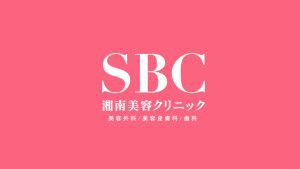A Company with Zero Revenue Conducts an IPO on Nasdaq
In May of this year (2018), a Singaporean pharmaceutical company, ASLAN Pharmaceuticals, conducted an IPO on Nasdaq. For the 2017 fiscal period immediately preceding its IPO, ASLAN had zero consolidated revenue and a pre-tax loss of $40 million (approx. 4.0 billion JPY, converted at $1=100 JPY).
As a company engaged in new drug development, it is understood that revenues and profits will be booked if and when the pipelines under development reach the market. However, in a Japanese IPO, it is almost unthinkable for a company with zero revenue to go public.
In fact, a total of 90 companies conducted an IPO in Japan last year (2017). Among them, the company with the lowest revenue in the most recent fiscal period was Solasia Pharma K.K., which still had approximately 200 million JPY in sales. Regarding profit, while there were some companies that were in the red, they numbered only 6 out of 90. The company with the largest deficit was Money Forward, Inc., with a loss of 900 million JPY.
Both the Tokyo Stock Exchange (TSE) Mothers market and Nasdaq do not strictly require sales or profits for listing. Therefore, it is theoretically possible for a zero-revenue, loss-making company to conduct an IPO. In practice, however, a company with zero revenue and a deficit—no matter how much future potential its business has—also carries a commensurate risk of failure. In the Japanese securities market, the lead underwriting securities firm would likely judge such a move as premature, and even if attempted, a favorable stock valuation could not be expected.
In contrast, companies with zero revenue or losses are successively conducting IPOs on Nasdaq, and such companies are still receiving solid valuations. On the other hand, on Nasdaq, companies that fail to meet listing standards are routinely delisted. It can be said that a culture of risk-taking exists on Nasdaq, among both companies and investors.
What are the Nasdaq Listing Requirements?
By the way, even when speaking of “Nasdaq” in general, there are actually three distinct market tiers.
- The NASDAQ Capital Market: Also known as the “small-cap” market, this is the market for startups and smaller-cap companies.
- The NASDAQ Global Market: This is the “mid-cap” market, where mid-sized companies are gathered.
- The NASDAQ Global Select Market: This is the top-tier market, comprised of large, globally recognized companies.
Among Japanese companies, FRONTEO, Inc. (formerly UBIC, Inc.) listed on the Global Market in 2013 but was promoted to the Global Select Market in 2014. Internet Initiative Japan Inc. (IIJ) is also currently listed on the Global Select Market.
As mentioned, a Nasdaq listing is possible not only for large enterprises but also for zero-revenue startups. But what are the specific listing requirements? While full details are available on Nasdaq’s site, startups and ventures considering a Nasdaq listing will most likely aim for the NASDAQ Capital Market, which has the most lenient requirements. We will focus on the Nasdaq Capital Market here.
| Requirement | Stockholders’ Equity Standard | Market Value Standard | Net Income Standard |
| Stockholders’ Equity | $5 million | $4 million | $4 million |
| Market Value of Publicly Held Shares | $15 million | $15 million | $5 million |
| Operating History | 2 years | — | — |
| Market Value of Company | — | $50 million | — |
| Income from Continuing Ops. Before Tax (Latest FY or 2 of 3) |
— | — | $750,000 |
| Publicly Held Shares | 1 million | 1 million | 1 million |
| Total Stockholders | 300 | 300 | 300 |
| Market Makers | 3 | 3 | 3 |
| Bid Price Closing Price |
$4
$3 |
$4
$2 |
$4
$3 |
Note: The Bid Price or Closing Price requirement must be met (e.g., a $4 Bid Price OR a $3 Closing Price for the Equity Standard).
To list on the Nasdaq Capital Market, a company must satisfy all requirements under any one of the three standards (Stockholders’ Equity, Market Value, or Net Income).
- Under the Stockholders’ Equity Standard, assuming other requirements like stockholders are met, a company needs at least two years of operating history, $5 million in stockholders’ equity, and a $15 million Market Value of Publicly Held Shares. There are no revenue or profit requirements.
- Under the Market Value Standard, a total Market Value (Market Cap) of $50 million is required, but operating history is not, and stockholders’ equity only needs to be $4 million. Like the Equity Standard, there are no revenue or profit standards.
- Under the Net Income Standard, the company must have $750,0Monitor income from continuing operations before tax (in the latest fiscal year or 2 of the last 3). A total Market Value is not required, and the Market Value of Publicly Held Shares only needs to be $5 million.
Companies will utilize the standard that is easiest to meet based on their stage and situation. When compared to the listing standards for the TSE Mothers market (e.g., market value of tradable shares of 500 million JPY or more, total market cap of 1 billion JPY or more), I do not believe the hurdle is particularly high.
Nasdaq Capital Market Continued Listing Requirements
| Requirement | Stockholders’ Equity Standard | Market Value Standard | Net Income Standard |
| Stockholders’ Equity | $2.5 million | — | — |
| Market Value of Listed Securities | — | $35 million | — |
| Net Income from Continuing Ops. (Latest FY or 2 of 3) |
— | — | $500,000 |
| Publicly Held Shares | 500,000 | 500,000 | 500,000 |
| Market Value of Publicly Held Shares | $1 million | $1 million | $1 million |
| Bid Price | $1 | $1 | $1 |
| Total Stockholders | 300 | 300 | 300 |
| Market Makers | 2 | 2 | 2 |
These are the requirements that must be continuously met while listed on Nasdaq. Regardless of which standard was used for the initial listing, at least one of the above standards must be met at all times. In other words, if a company fails to meet all of these standards, it will be delisted.
It should be noted that companies delisted from Nasdaq for failing to meet the continued listing requirements almost always transition to the over-the-counter (OTC) market.
Next time, we will explain this OTC market.
For questions or consultations regarding this page, please feel free to contact us using the inquiry form below.










